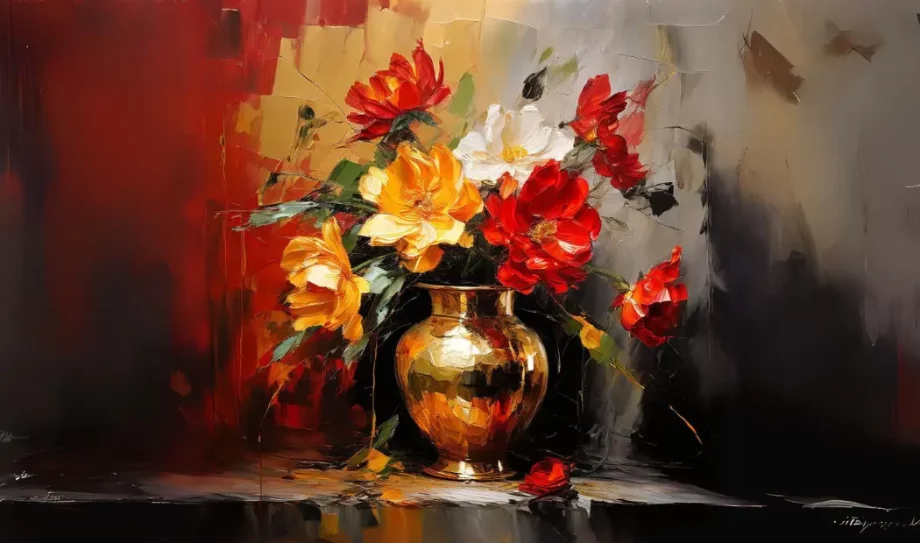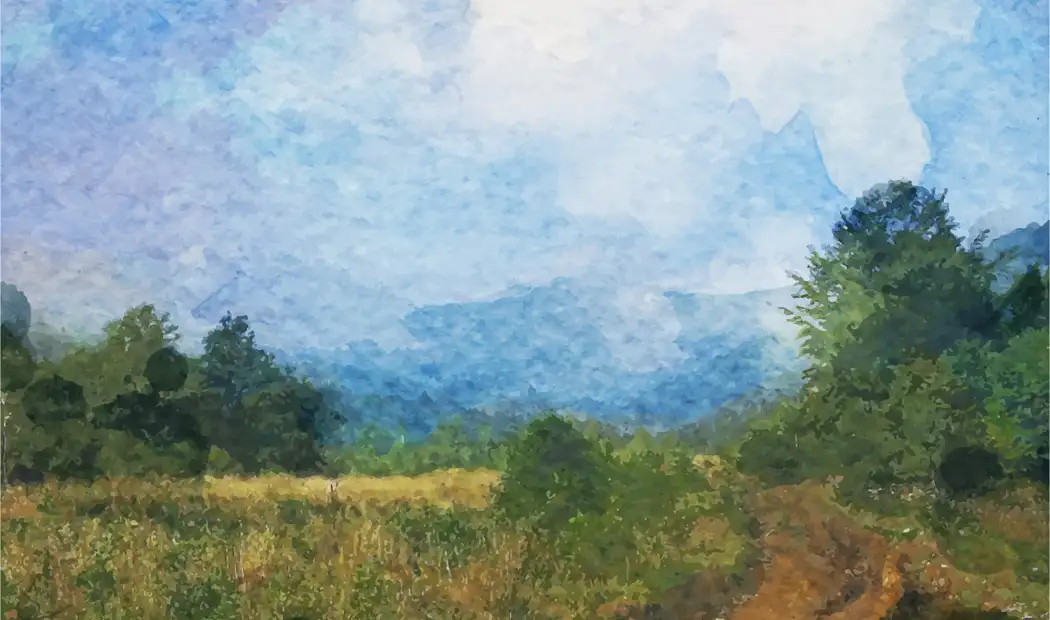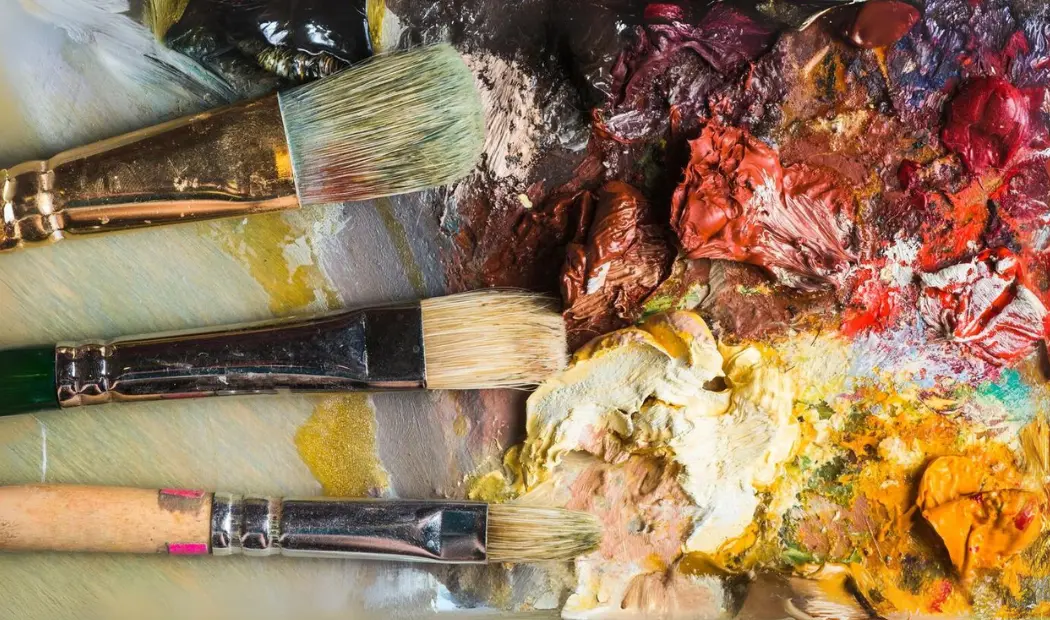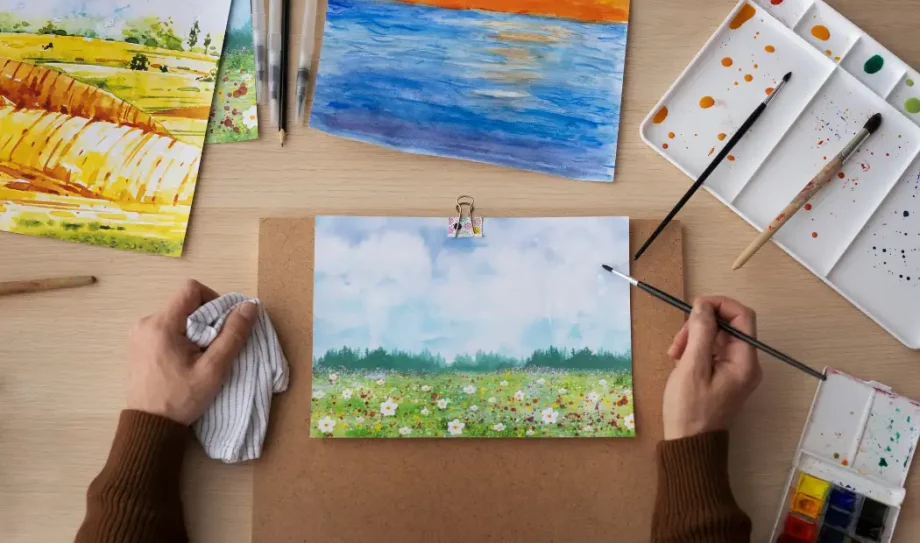In the world of art, oil painting is timelessly attractive. There are rich colors and versatility. It is important to understand the nuances of oil paint. As oil painting has its own drying process and technique, it significantly impacts an artist’s workflow. We should also check the proper cleaning techniques before beginning any oil painting adventure.
Do you know how long does oil paint take to dry? In this guide, we will explore everything you need to know about how long does it take an oil painting to dry and effective drying techniques and practices to maintain and clean oil paintings.
What Are Oil Paints, Really?
Oil paints are made by suspending pigment in drying oils—typically linseed, poppyseed, or walnut oil. The result? A luxuriously smooth, slow-drying paint that lets artists layer, blend, and finesse to their heart’s content.
Key Features:
- You got more time to blend & correct
- Rich, vivid colors with depth
- Works well for glazing & layering
- Needs solvents (like turpentine) for cleanup
Oil Paintings
From Van Gogh’s Starry Night to Da Vinci’s Mona Lisa, oil paintings have defined centuries of artistic greatness. Their ability to hold color vibrancy over time and support subtle textures and light effects makes them the go-to for fine art.
Oil paintings are known for:
- Depth and texture that make them pop off the canvas
- Durability when properly maintained
- A certain “wow factor” you feel just by standing in front of one
How long does oil paint take to dry?
The drying time of oil paint depends on various factors. Oil paint can take a few days to several weeks to completely dry. Let’s discuss these factors and how oil paint dries.
- Density of pigment: Certain pigments dry faster than others because they have a different composition. White and earthy tones dry more quickly than colors made with heavier pigments like cobalt.
- Thickness of application: Thick layers take longer duration to dry as compared to thin washes.
- Humidity and temperature: High humidity and a cool temperature can increase drying times. Less humid and warm temperatures can help with faster drying.
Please refer to the table below to understand how long does an oil painting take to dry.
| Color | Average drying time |
| Titanium white | 2-5 days |
| Cadmium red | 5-7 days |
| Ultramarine blue | 7-10 days |
| Burnt umber | 3-6 days |
Acrylic vs Oil Paint – Which One Wins?
| Feature | Oil Paint | Acrylic Paint |
| Drying Time | Slow – hours or days | Fast – dries in minutes |
| Blending | Smooth and controlled | Tougher to blend |
| Clean-up | Needs solvent | Water is enough |
| Texture | Thick, glossy finish | Flat, matte or satin finish |
| Skill Level | Advanced, more control | Beginner-friendly, fast to use |
How oil paint dries?
Oil paint dries through the process of oxidation. Molecules of oxygen react with the oils in the paint. It forms a tough and durable film. This curing process continues over time. It contributes to the longevity and strength of oil paintings.
Drying times for oil paint
This table will help you understand how long does it take oil paint to dry depending on the type of layer and type of oil used in oil paints.
| Types of oil | Thin layers | Thick layers |
| Linseed oil | 2-7 days | 1-3 weeks |
| Walnut oil | 4-10 days | 2-4 weeks |
| Poppy oil | 3-8 days | 1-3 weeks |
How to make paint dry fast?
We will now see what techniques artists use to increase the drying process.
- Ventilation: Ventilation should be adequate in the workspace. It promotes faster drying by circulating air. It reduces humidity levels.
- Temperature and humidity: It is very important that the temperature should be moderate. The optimal temperature is around 70-75 °F. It is important to have low humidity.
- Use of medium: There are fast drying mediums like alkyd-based mediums available on the market. They can significantly reduce the drying time without compromising the color density.
- Thin layers: It is very important to apply paint in thin layers. It helps with the quicker evaporation of solvents and faster oxidation.
Comparison of drying accelerators
This table helps to understand the accelerators that cause drying. Let’s look into them along with comparing various factors.
| Technique | Effectiveness rating | How to apply | Considerations |
| Drying mediums | High | Use it by mixing with the paint. | It alters the texture slightly |
| Solvent thinning | Medium | You can apply in thin layers | It requires very careful application |
| Environmental control | Low | Use heaters or fans | It needs to be monitored |
How to clean an old oil painting?
It is very important to preserve the beauty of oil paintings. We will be studying the regular cleaning and maintenance techniques of the blog. Let’s see, then.
- Removal of dirt: You can use a dry brush or a lint free cloth to gently remove surface debris.
- Cleaning solutions: You can use distilled water to prepare cleaning water. You can gently wipe the painting surface in circular motion.
- Avoid harmful chemicals: You should refrain yourself from using commercial cleaners or solvents. They can damage the paint surface over time.
- Talk to a consultant: There are some valuable or delicate artworks. For such pieces, you can consult a professional conservator for specialized cleaning and maintenance advice.
How do you clean an oil painting?
We will now see the cleaning methods for oil paintings. We will understand them with the help of this table, where we will differentiate them based on various factors.
| Method | Effectiveness | Considerations | Suitable for | How to apply |
| Dusting | It has moderate effects. | It requires regular upkeep. | It is suitable for dirt and dust. | You can use a soft, dusty cloth. |
| Mild soap solution | It has very high effects | It requires gentle handling. | It is suitable for sticky dirt and stains. | You can use detergent water. |
| Professional cleaning | It has the highest level of effect. | It is costly, and it requires expertise. | It is suitable for restoration purposes. | You should consult a professional. |
| White spirit | It has high effects. | You should be precise and gentle too. | It is suitable for stubborn stains | It should be applied with a cotton swab. |
Best Oil Paints for Beginners
Choose student-grade oil paints for affordability and easy handling.
- Look for strong pigment and a smooth, blendable texture.
- Avoid paints that dry too fast or are labeled “professional” at first.
- Start with basic color sets to learn color mixing.
How to Clean Oil Paint Brushes
- Wipe off excess oil paint with a rag or paper towel immediately after painting.
- Swirl the brush gently in the solvent.
- Wipe again and repeat until clean.
- Wash with soap (dish soap works) and warm water.
- Rinse well and reshape bristles before drying.
- Let the brush dry flat or upside down to avoid damaging the shape.
- Clean brushes after each use to make them last longer.
Summing Up!
We aim to provide a comprehensive guide to oil paint drying times and techniques. Oil painting is not just a skill but it also requires understanding the science behind drying times and proper maintenance. You should know how to dry oil paint and how to manipulate drying times. You can improve the longevity of the oil paintings. You can accelerate the drying time too. These fundamentals will help artists confidently explore the experience of oil painting and preserve it for generations.
Looking for awesome paint by number kits? Why don’t you visit Art of Paint by Number?













